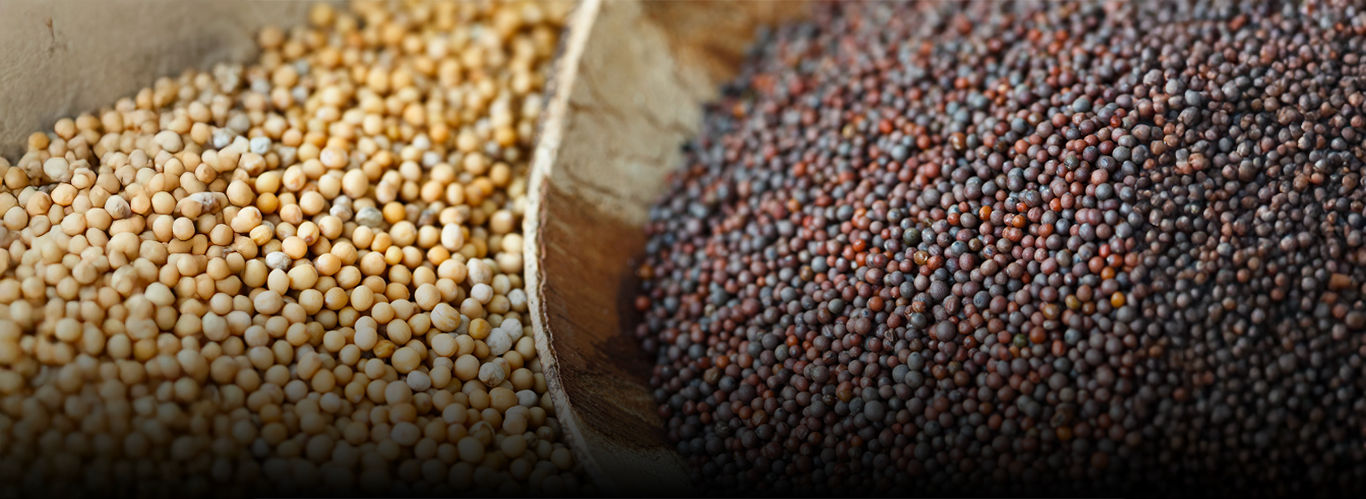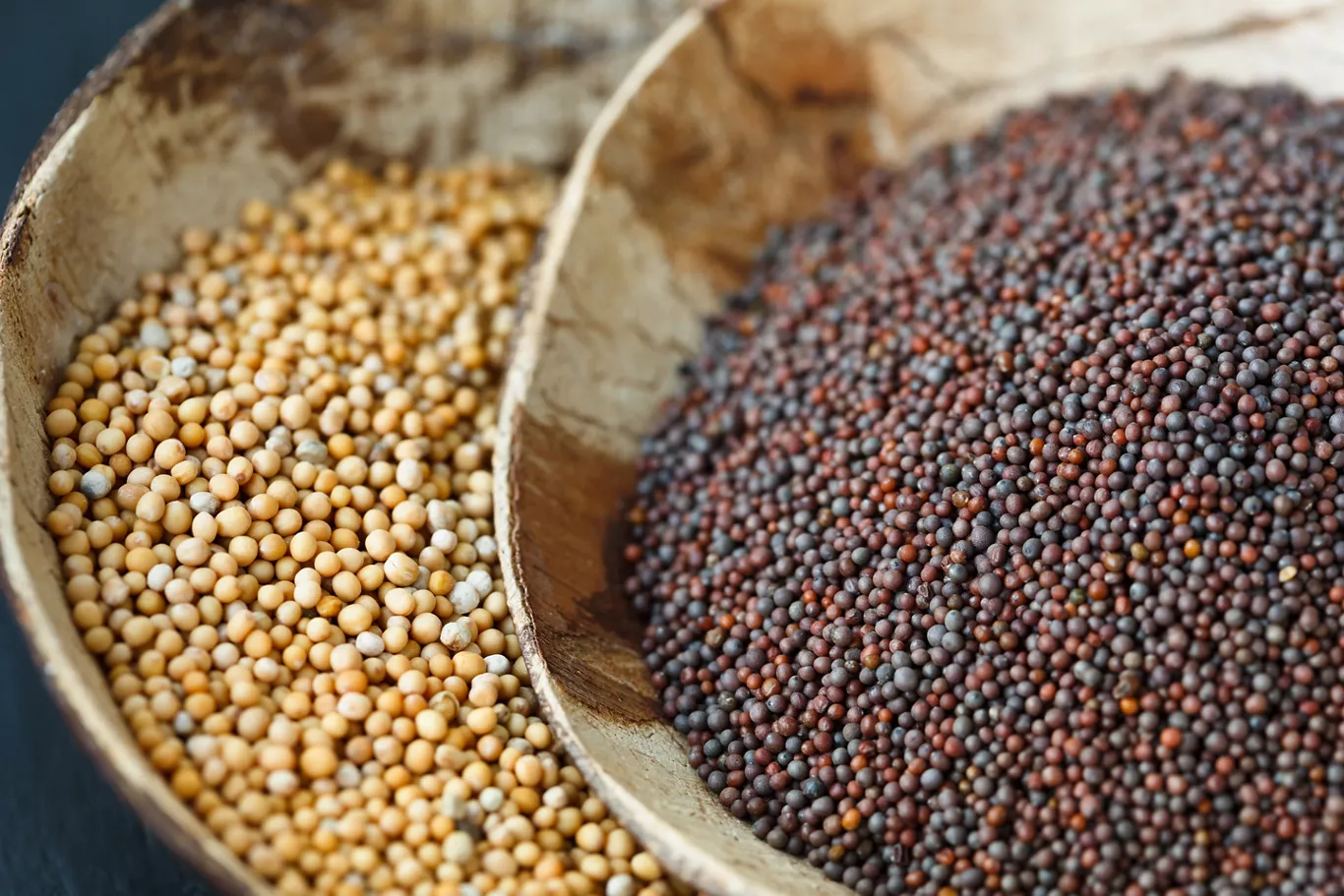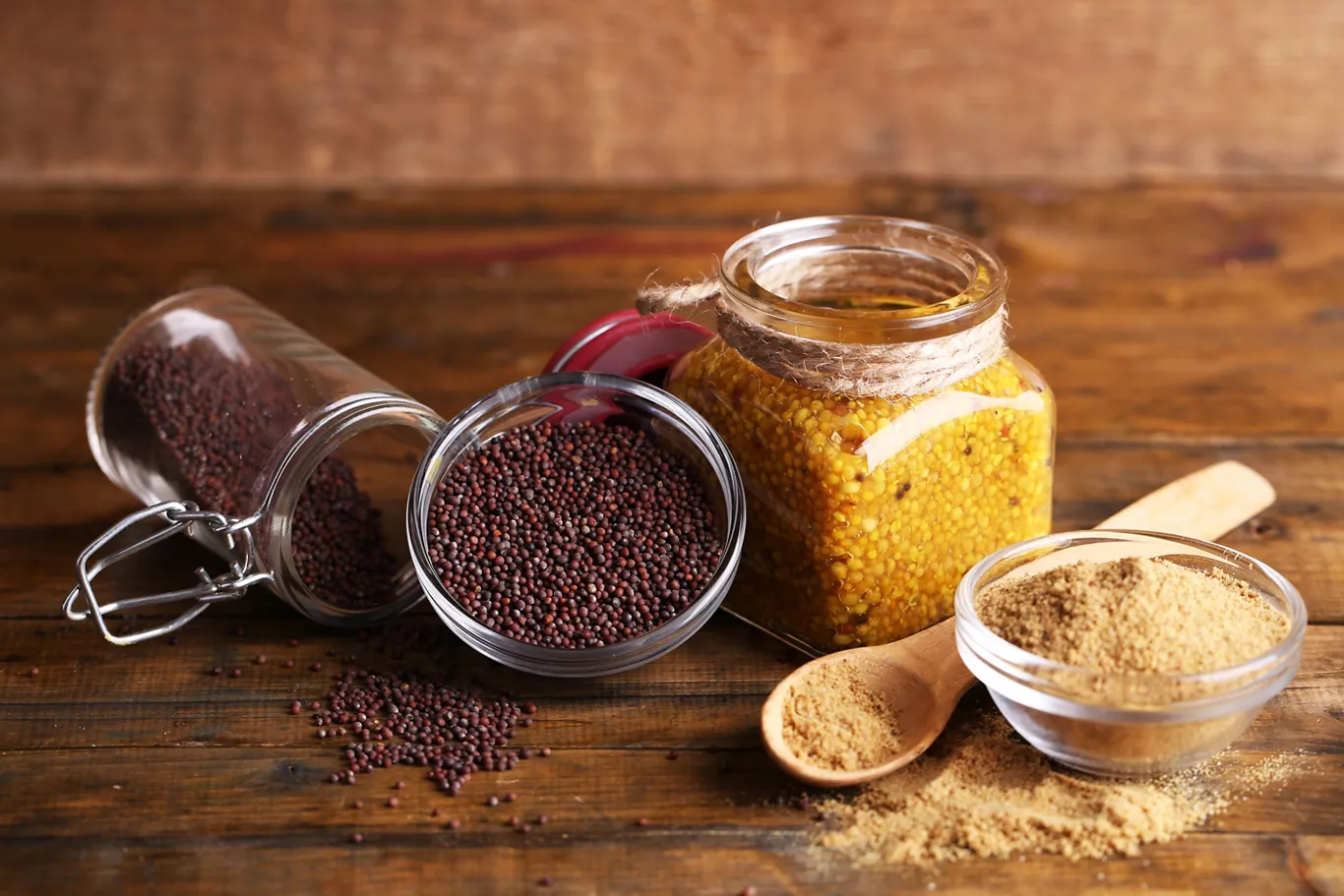At Sunrise, we understand mustard's integral role in Bengali cuisine and culture. With its rich history and diverse varieties, mustard is a staple in many of our cherished dishes. From the tangy punch of yellow mustard to the robust flavour of brown mustard, each type offers unique culinary experiences.Our whole mustard seeds and mustard powder are crafted to bring out the best in your cooking, ensuring that every dish resonates with the authentic taste of Bengal.
In this article, we'll explore the different varieties of mustard seeds, including yellow sarso and brown mustard, and their uses in our beloved recipes. Join us as we delve into the world of mustard and discover the flavours that make our cuisine so special.
Types of Mustard Seeds?
Yellow Mustard Seeds
Celebrate the vibrant and tangy flavour of yellow mustard seeds, also known as yellow sarso. These seeds are milder than their brown counterparts and are a staple in Bengali kitchens. Yellow mustard is perfect for creating smooth pastes in classic dishes like shorshe bata maachh (mustard paste fish). Its mild flavour profile makes it versatile and suitable for salad dressings and pickles, adding a delightful zing to your meals.
Brown Mustard Seeds
Brown mustard seeds are a powerhouse of flavour, offering a more robust and intense taste. These seeds are integral to Bengali cuisine and are known for their pungency and heat. Brown mustard seeds enhance the depth of dishes like panch phoron and kasundi (Bengali mustard sauce). The rich, spicy flavour of brown mustard makes it ideal for tempering in hot oil to release its aromatic oils, a common mustard seed used in traditional recipes.
Mustard Seed Varieties
Exploring the different types of mustard seeds, we find unique varieties that cater to diverse culinary needs. Besides yellow and brown mustard, there are also black mustard seeds, which are less common but equally flavourful. Each type of mustard seed brings its distinct characteristics to the table, enriching the culinary landscape with its unique taste and aroma.
Significance of each type of Mustard
From the mild and tangy yellow mustard seeds, also known as yellow sarso, to the robust and pungent brown mustard and the intensely spicy black mustard, these varieties are indispensable in creating the rich tapestry of Indian cuisine.
Each type of mustard seed plays a distinct role in enhancing dishes, contributing to signature recipes and regional flavours that are cherished across the country. This exploration delves into the significance of each type of mustard, highlighting their uses, aromas, and the unique qualities they bring to various traditional dishes.
The Versatile Yellow Mustard
Yellow mustard seeds, also known as yellow sarso, are a cornerstone of many culinary traditions in the Indian subcontinent, particularly in Bengali cuisine. These seeds are known for their mild flavour and smooth texture, making them perfect for creating creamy pastes and sauces. Yellow mustard is often used in dishes like shorshe ilish (hilsa fish in mustard sauce), whose tangy flavour enhances the fish's richness. The seeds' mild aroma and subtle heat make them versatile enough for salad dressings, marinades, and pickles, adding a gentle zing to various dishes. Yellow mustard is also a key ingredient in making mustard powder, which is widely used in spice blends and condiments.
The Bold Brown Mustard
Brown mustard seeds are celebrated for their robust and pungent flavour. These seeds have a coarser texture than yellow mustard, adding a distinct bite to dishes. In Bengali and South Indian cuisines, brown mustard is a staple ingredient. Its sharp, spicy aroma intensifies when tempered in hot oil, a common mustard that releases the seeds' essential oils and enhances the dish's overall flavour. Signature dishes like panch phoron (a Bengali five-spice blend) and kasundi (a spicy mustard sauce) rely on the bold taste of brown mustard to create their unique profiles. Brown mustard is also used in various pickles and chutneys, adding depth and heat to these condiments.
The Potent Black Mustard
Black mustard seeds, while not as commonly discussed, are integral to many Indian dishes. These seeds are the most pungent and spicy among the mustard varieties, with a slightly coarse texture. They are predominantly used in South Indian cooking, especially in dishes like sambar and rasam, where their strong flavor and aroma add depth and complexity. Black mustard seeds are often used for tempering, where they are fried in oil until they pop, releasing a nutty and spicy fragrance that forms the base of many curries and dals. Their intense flavor makes them a favourite in traditional Indian pickles and spice blends, providing a distinctive kick that enhances the overall taste.
Conclusion
Each type of mustard seed—yellow, brown, and black—brings unique qualities to the table.
From the mild and tangy yellow mustard to the robust and spicy brown mustard and the intensely pungent black mustard, these seeds are essential to the rich culinary heritage of the Indian subcontinent.
Signature dishes across various regions owe their distinctive flavours to carefully using these mustard seeds, making them indispensable in Indian cooking.
At Sunrise, we offer whole mustard seeds and mustard powder, ensuring you have the perfect ingredient for every recipe. You can now conveniently shop for these spices online at sunrise.in, bringing authentic flavours right to your kitchen.
FAQs
In India, various mustard seeds are used, including yellow mustard (yellow sarso), brown mustard, and black mustard. Each type has its unique flavor profile and culinary uses. Yellow mustard seeds are known for their mild flavor and smooth texture, making them ideal for pastes and sauces. Brown mustard seeds offer a robust, pungent flavor and are commonly used in spice blends and tempering. Black mustard seeds, the most pungent, are predominantly used in South Indian cuisine to add depth and complexity to dishes like sambar and rasam.
There are many types of mustard because each variety offers distinct flavors, aromas, and textures that suit different culinary needs. The diversity in mustard varieties allows cooks to choose the best type for specific dishes. Yellow mustard seeds provide a milder taste, making them suitable for smooth pastes and dressings. Brown mustard seeds have a stronger, spicier flavor, perfect for robust sauces and tempering. Black mustard seeds, with their intense pungency, are ideal for adding a bold kick to curries and pickles. This variety ensures that mustard can enhance a wide range of culinary creations.
Black mustard seeds are one of the pungent mustard varieties used in Indian cuisine. They have a slightly coarse texture and are known for their strong, spicy flavor. These seeds are often used in South Indian cooking, especially in dishes like sambar and rasam, where their intense aroma and heat add depth and complexity. Black mustard seeds are commonly used for tempering, where they are fried in oil until they pop, releasing a nutty and spicy fragrance that forms the base of many curries and dals.


